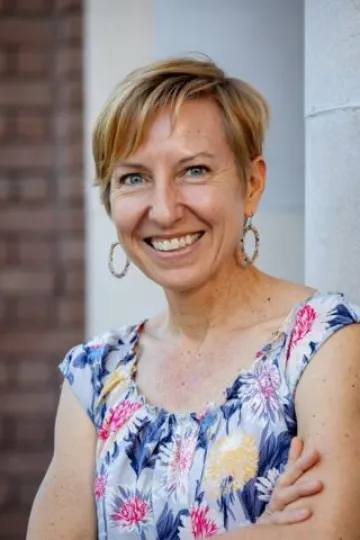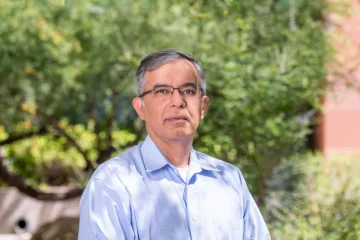University of Arizona selected to participate in NSF-NobleReach Emerge partnership aimed at speeding biotechnology development and translation
Arizona is the only institution with two projects chosen for pilot program that pairs research teams with entrepreneurial experts in effort to establish long-term financial viability

By investing in researchers whose work has potential commercial applications, a new partnership between the National Science Foundation (NSF) and NobleReach Emerge aims to help investigators establish their financial footing and stand on their own.
Through the $5 million NSF-NobleReach Emerge collaboration, projects are identified by NSF’s Directorate for Biological Sciences based on market research, grant analysis and investigator-readiness evaluations. The 11 projects chosen will not only receive guidance from commercialization experts at NobleReach Emerge, but also additional investment to accelerate the translation of research into market-ready biotechnologies.
This model could be a game-changer for researchers who are often locked into a near constant pursuit of new and additional funding to simply keep operations afloat—taking valuable time and energy away from their actual research.
“At the University of Arizona, our research and innovation is driven by a focus on bettering the human experience through work with broad economic and societal outcomes,” said Elliott Cheu, UArizona interim senior vice president of research and innovation. “It is encouraging to see NSF and NobleReach Emerge recognize this commitment and invest in two deserving and impactful research projects that will benefit from sustained support to move these activities toward commercial use in support of NSF's vision."
Asking for help

Theresa Crimmins
“We’re trying everything,” said Theresa Crimmins, associate professor of phenology and director of the USA National Phenology Network (NPN). “Pursuing foundation funding, pursuing donors, and it seemed like maybe we weren’t the only program asking for some help.”
The NPN engages citizen scientists to track what plants and animals are doing in order to research growth cycles and how they are changing. It provides biological infrastructure to clients in varying fields, from agriculture to tourism to human health.
Since it was established in 2007, the NPN has been supported largely by the U.S. Geological Survey (USGS). By the end of 2019, budget cuts forced the federal agency to focus on its own staff and pull support of NPN. Crimmins then had to restructure and reduce the size of her team.
“We’ve tried really hard to maintain the core operations,” she said. “We’ve been keeping the lights on, but it has not been easy. I believe so much in the good we bring to society and to science. A lot of our partners are depending on us.”
Now relying heavily on various grants, Crimmins admits to losing sleep over the anxiety of securing NPN’s next source of funding. She considers her team fortunate to receive an appropriation in last year’s federal budget, as well as the FY24 budget.
“That has honestly allowed us to continue operations, but it’s not a long-term solution at all,” said Crimmins. “It’s a very unstable way to do business.”
With NPN selected as one of two UArizona projects that will benefit from the support of the NSF-NobleReach Emerge collaboration, Crimmins feels some sense of relief. “Maximizing profit is not our aim,” she said. “We just want to pay the bills without undue stress so our work can continue to provide societal impact.”
Embedded expert
One of the main aims of the NSF-NobleReach Emerge pilot is to embed experts with entrepreneurial backgrounds into the selected programs for a year. Each research team interviews, and ultimately hires, the expert it believes will best support the project’s needs. These experts help their team take critical steps toward translation, including intellectual property and market analyses, product development, go-to-market strategies, and pitch deck creation. Each project is unique, but they share the common funding struggle.
With an expert in commercialization and another in philanthropy already hard at work with NPN, the second NSF-NobleReach Emerge selected UArizona project, CyVerse, is also beginning to benefit from entrepreneurial expertise and support.
Nirav Merchant, director of CyVerse as well as the university’s Data Science Institute, said CyVerse’s selection for the pilot program serves as “[…]strong validation by both NSF and NobleReach through their screening processes that they see value and potential in our team and what we have achieved.”

Nirav Merchant
CyVerse was developed to design, deploy and expand national cyberinfrastructure broadly for research, and to train scientists in its use. For Merchant, a member of the interdisciplinary BIO5 Institute, this validation means continuing to provide access to advanced technologies for CyVerse’s users, some of whom are researchers or educators in underserved communities. He does not want to drop users simply because they, or their employer, cannot afford CyVerse’s services. Merchant’s hope is that an embedded expert will help his team discover a revenue source that ensures equitable access to those who need it.
“We will continue to play that role,” he said. “CyVerse is a vehicle for disseminating and democratizing access, helping to close the digital divide.”
Merchant and Crimmins are fully committed to the University of Arizona community.
Crimmins believes the university is providing everything it can to support this sort of programmatic sustainability. She’s met with representatives from Tech Launch Arizona and the University of Arizona Foundation to explore options, and now consults with third-party philanthropy experts as well.
But institutional, long-term financial support of every project at a Research 1 university is unrealistic. “Our desire is to be financially solvent and not a burden to the university,” said Merchant. “The support of a partnership like NSF-NobleReach is a win-win situation for everyone.”
Defining success
A victory for Merchant would be CyVerse continuing to support research projects as it’s done for the last 15 years, only now without the worry of what will be the next source of operating capital.
And by the end of the process, Crimmins hopes to redefine what success looks like for NPN. No longer worrying about the pursuit of funding pulling attention and resources away from project goals will enable her entire team to make a greater difference.
“Hopefully we’re moving toward a solution for a chronic problem that is across programs and across universities,” she said. “We’re so fortunate to be part of a cohort that’s receiving this expertise and to be able to share what we learn with other groups facing similar challenges.”
Both are hopeful that the partnership between NSF and NobleReach could lead to the breakthrough that’s needed to ensure important research does not disappear when a grant cycle ends. A full list of projects selected for this program can be found here.

